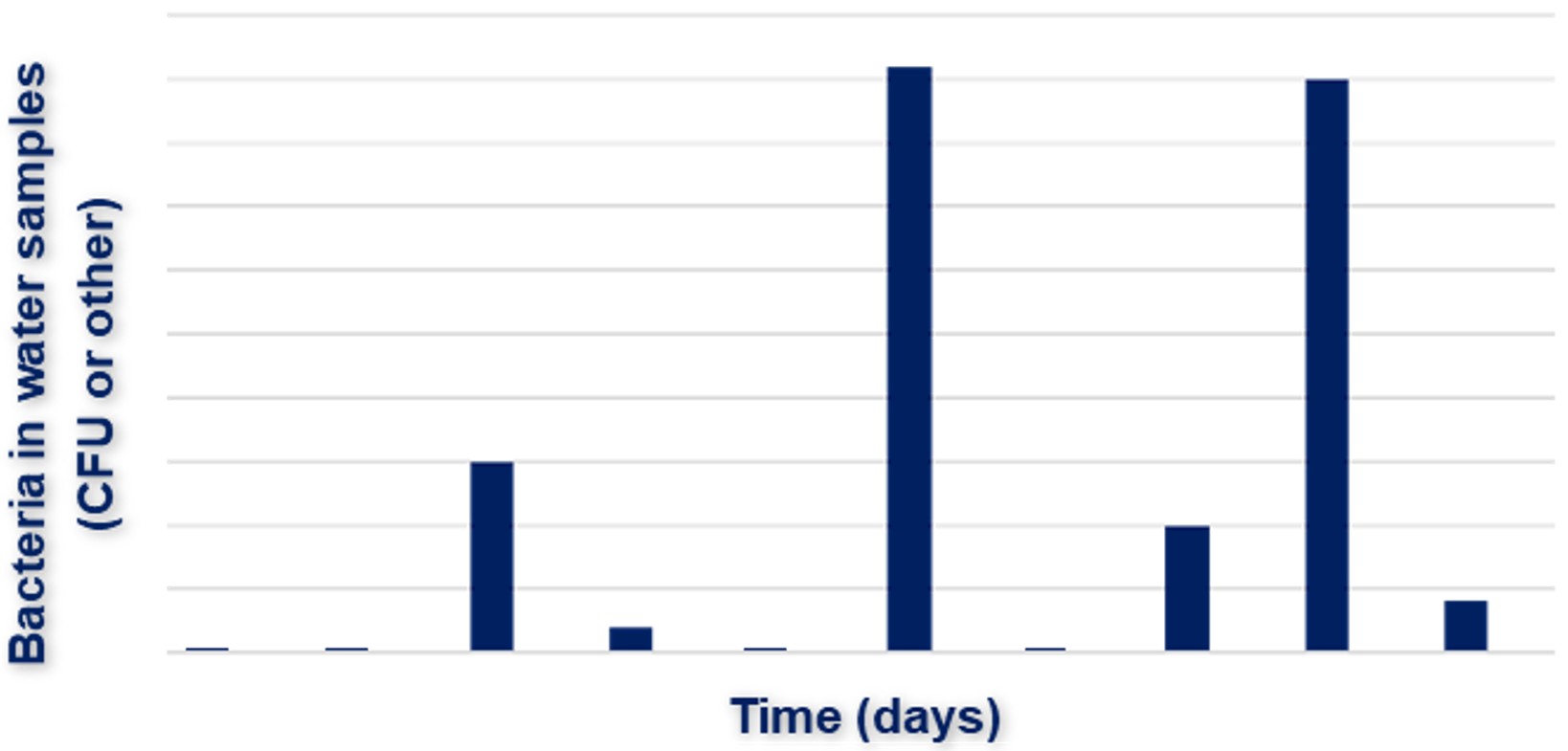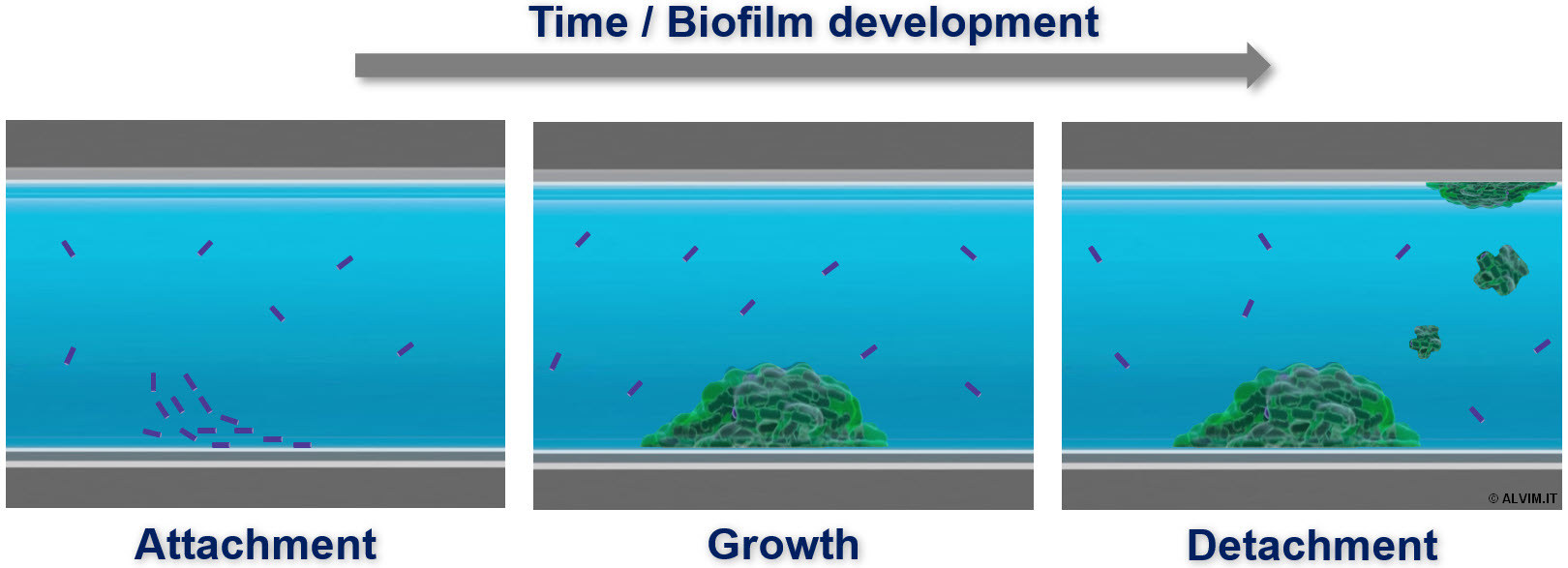Fluctuations in Bacterial Count [Download this white paper as PDF file]

Microbial control practices are applied in most industries dealing with water or other liquids, to keep the proliferation of bacteria and other microorganisms under control. To monitor the bacterial contamination of a process, sampling and laboratory analysis of the liquid represent the most common approach. This allows to detect free-floating microorganisms - and it happens quite often to observe large and unexpected fluctuations in the amount of bacteria in the sample (see figure on the right).
The low bacterial counts that can be observed (figure below, green bars), followed by high values (figure below, red bars), could suggest that something is wrong with the feedwater - since this is expected to be the main source of bacteria. But it is highly unlikely that bacterial count of feedwater fluctuates so much and so often.


On the other hand, the importance of microbial growth on the surface of pipes is often underestimated. The formation of a bacterial layer on surfaces in contact with liquids is an ubiquitous phenomenon, usually known as ''biofilm''. Such microbial slime is formed even when the feed water contains few bacteria - and even when such water is filtered (as reported in this application case). Once microorganisms settle, they start to duplicate, giving rise to a bacterial layer that hosts many more microorganisms than those free in the water. When biofilm is mature, parts of it can detach and float away, transported by the water (see figure on the left).
The biofilm contamination of a piping system can explain well the fluctuations in bacterial count discussed above. Indeed, even when biofilm is present on surfaces, the amount of free-floating bacteria can be quite low in the liquid (see figure below, on the left). This is why standard techniques based on liquid sampling and analysis cannot provide a fully representative indication of the real microbial risk. On the other hand, when parts of biofilm detach, these can be sampled with the liquid, leading to a high bacterial count (see figure below, on the right).

Based on the indication provided by bacterial count on liquid samples only, a system contaminated by biofilm - and thus, at risk - might be wrongly considered as safe. For this reason, sampling and analysis of the liquid are not enough to prevent microbial contaminations. Biofilm monitoring represents the best approach to ensure the microbial safety of a system, providing an early warning indication of potential problems.
|
Do you have biofilm-related issues?
|





